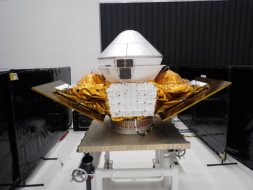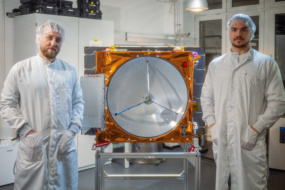UK nuclear propulsion startup Pulsar Fusion has dreams of ferrying rockets to the Moon, Mars, and Saturn—but first, they’re headed to Texas.
The company is opening a new office in Austin, TX, to increase its proximity to potential US clients and investors. After over a decade studying, developing, and testing its nuclear propulsion tech, the expansion comes amid a ramp up of Pulsar’s commercial partnerships.
Firing on all cylinders: Pulsar’s nuclear fusion spacecraft—Sunbird—consists of a dual direct fusion drive (DFDD), and eight Hall-effect thrusters. Together, these should provide the massive thrust capable of reaching speeds of 329,000 mph, and the smaller pulses needed for precise maneuvers.
Pulsar plans to test its nuclear fusion tech in space by 2027, and is expected to test components of the Sunbird’s power system in orbit as soon as this year. In the meantime, the company is ramping up its ground-based tests.
- Pulsar is test-firing its Hall-effect thrusters to demonstrate their technical capabilities; it has also signed an MoU with Thales Alenia Space, which has shown interest in the electric propulsion tech.
- Pulsar also recently built two space grade vacuum chambers in England—the largest of their kind in the UK—which it will use to conduct endurance tests for its Hall-effect thrusters, and its Sunbird fusion spacecraft.
Here and now: Nuclear fusion propulsion has long felt out of reach, but thanks to AI, Pulsar officials say they have been able to refine the complicated propulsion technology to make it an operational reality. The company is using AI to help make their nuclear fusion reactors smaller, more intelligent, more precise, and ultimately, more practical.
Pulsar’s goal for in-space propulsion is twofold:
- Drive down the time it takes for spacecraft to get to distant locations in space,
- Increase the fuel efficiency of spacecraft in-orbit.
However, the tech isn’t just for space.
“These reactors are uniquely suited for in-orbit use, and in many ways, it’s more practical to use fusion for space propulsion than for energy on Earth. That said, we must pursue both—and I believe we will ultimately succeed in both,” CEO Richard Dinan said in a statement.




